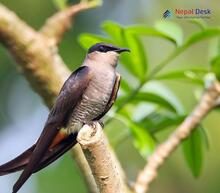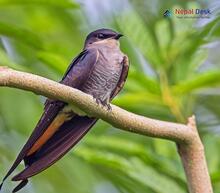Discovering the Wonders of Cypsiurus in Nepal: An In-Depth Look at Classification, Common Features, Evolutionary Relationships, and Nomenclature
The diverse and enchanting land of Nepal is home to an array of fascinating wildlife species, including the fascinating bird genus Cypsiurus. In this article, we'll delve into the world of Cypsiurus birds, explore their classification, common features, evolutionary relationships, and nomenclature while shedding light on their intriguing presence in the Nepalese ecosystem.
Classification: Understanding Cypsiurus in the Animal Kingdom
Cypsiurus belongs to the family Apodidae (swifts) and class Aves (birds). They are often identified by their unique and agile flight patterns that set them apart from other bird species. This captivating genus comprises several species that contribute to Nepal's rich biodiversity.
Common Features: The Defining Characteristics of Cypsiurus Birds
Cypsiurus birds are typically medium-sized with streamlined bodies built for speed and agility. These birds are known for their powerful wings and fast flight speeds that enable them to effortlessly navigate the skies. Some distinguishing features of Cypsiurus birds include:
1. Striking streamlined bodies
2. Long wings designed for high-speed flight
3. Wide mouths to effortlessly catch insects mid-flight
4. Tiny, weak legs adapted for a life spent almost entirely in the air
Evolutionary Relationships: Tracing the Origins of Cypsiurus Birds
The Apodidae family's evolutionary history can be traced back to the Eocene epoch (around 56-34 million years ago). Fossil records indicate that Cypsiurus shares a close evolutionary relationship with other swifts belonging to this family. Though there's still much research needed to fully understand their complex origins, it is clear that these incredible flyers have evolved unique features over millions of years that have allowed them to thrive in various ecosystems, including Nepal's diverse landscape.
Nomenclature: Decoding the Naming of Cypsiurus Birds
The term Cypsiurus derives from the Greek words “kypsos,” meaning “to hover” or “to soar” and “oura,” meaning “tail.” This name captures the essence of these birds' unique flight patterns and captivating presence in the skies. Furthermore, it reflects scientists' ongoing mission to identify, classify, and describe new species of birds through systematic nomenclature practices to better understand and preserve these remarkable creatures.
In conclusion, Cypsiurus represents a fascinating bird genus within Nepal's incredible biodiversity. By understanding their classification, common features, evolutionary relationships, and nomenclature, we can appreciate the captivating role these birds play in the Nepalese ecosystem. As further studies are conducted on these remarkable flyers, we deepen our knowledge as well as our admiration for the avian wonders found across Nepal and beyond.




